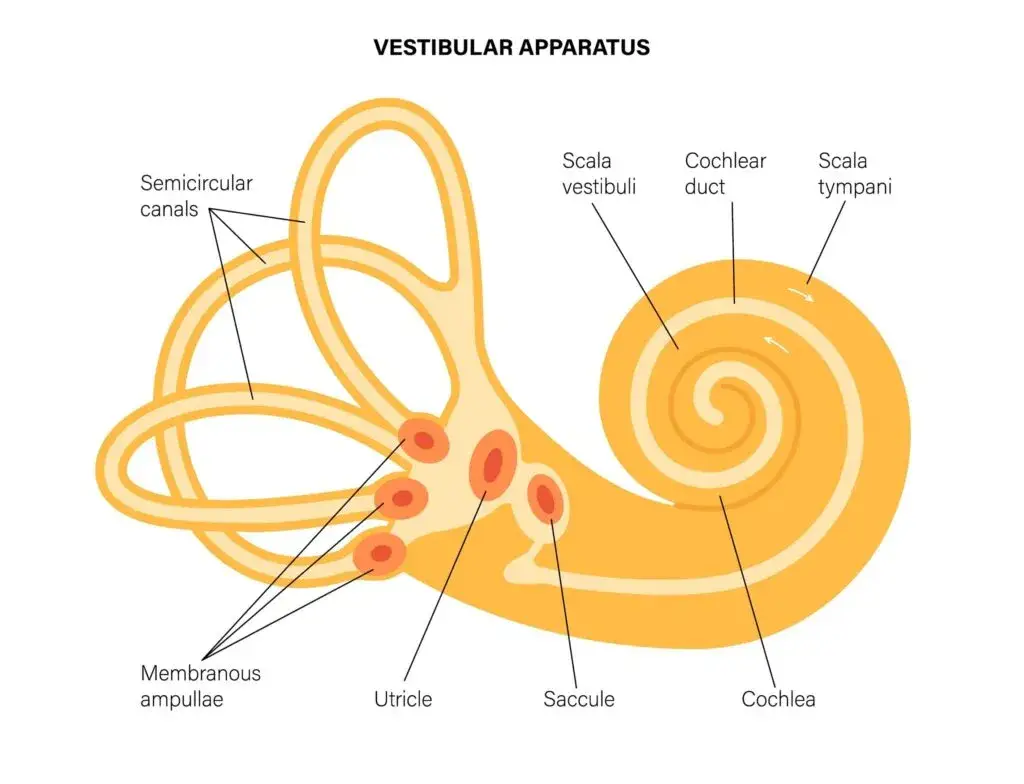
What Causes Trigeminal Neuralgia? Trigeminal neuralgia can feel like lightning splitting your face—sharp, shocking, unpredictable pain that hijacks simple moments like brushing your teeth, sipping coffee, or feeling a breeze on your cheek. If you are searching for lasting relief and typing “chiropractor near me” hoping for an answer that goes deeper than medications, you are in the right place. In this long, practical guide, we’ll show you how irritation at the very top of the spine—the upper cervical region—can disturb the trigeminal nucleus in the brainstem and drive facial pain. We’ll also explain the gentle, precise approach we use at Lavender Family Chiropractic in Sarasota to calm that root irritation and help your nervous system heal.
Our promise in this article is simple: cut through confusion, explain the neurology clearly, and give you a hopeful, actionable path forward. You’ll learn what trigeminal neuralgia is, what commonly causes it, why some treatments help only temporarily, how upper cervical chiropractic addresses the root, and what to expect when you visit our office—serving Sarasota, Bradenton, Lakewood Ranch, Parrish, and surrounding communities along Florida’s Suncoast.
What Causes Trigeminal Neuralgia? Understanding Trigeminal Neuralgia: A Quick, Clear Overview
The trigeminal nerve (cranial nerve V) carries sensation from your face to your brain. It has three main branches: ophthalmic (V1), maxillary (V2), and mandibular (V3). When any pathway along this system misfires, pain can strike suddenly—often described as electric shocks, stabbing pulses, or burning zaps. Episodes may last seconds to minutes, cluster for hours, or flare unpredictably for weeks.
Common triggers include light touch (washing your face, shaving, applying makeup), chewing, yawning, smiling, talking, cold air, or vibration. Some people experience spontaneous attacks without any trigger at all. Because TN pain is so severe and disruptive, it has sadly earned the nickname “the suicide disease.” While that label is stark, it reflects the magnitude of suffering—not the inevitability of hopelessness. There is a path forward.
Types of trigeminal neuralgia are often divided into three categories:
- Classical TN: Usually linked to vascular compression of the nerve root entry zone near the brainstem.
- Secondary TN: Occurs due to another condition (for example, multiple sclerosis or a tumor).
- Idiopathic or atypical TN: Pain patterns that do not fit classical criteria; sometimes dull, aching, or burning with intermittent sharp flares.
No matter the label, there is a vital and under-discussed factor: the health and alignment of the upper cervical spine and its impact on the trigeminocervical complex (which includes the trigeminal nucleus).
Where the Pain Starts: The Trigeminocervical Complex (TCC)
Imagine a busy train station inside your brainstem where sensory information from your face and upper neck converges, synapses, and relays signals up to conscious centers. That station is often called the trigeminocervical complex—primarily the trigeminal nucleus caudalis and adjacent dorsal horn regions. Sensory fibers from the trigeminal nerve and the first three cervical nerves (C1–C3) meet here, integrate, and modulate pain.
If this integration center becomes irritated—through mechanical stress, inflammation, altered cerebrospinal fluid (CSF) dynamics, or abnormal muscle tone—the threshold for firing pain signals can drop. The result: pain messages shoot into the face even with minor stimulation. This explains why a problem in the upper neck can produce facial pain, and why addressing the upper cervical spine can change symptoms that seem “purely facial.”
How Upper Cervical Misalignment Fuels Trigeminal Neuralgia
The atlas (C1) and axis (C2) are unique. They cradle the brainstem, protect the dens, and guide the motion that positions your head over your body. Even a small misalignment here can have outsized neurological effects. Four mechanisms matter most:
- Brainstem Irritation and Sensitization
When C1 or C2 lose their neutral relationship, the surrounding ligaments and muscles adapt with asymmetry and protective tension. This can subtly distort the dural sheath and the local environment around the brainstem. The trigeminal nucleus—right there in the neighborhood—becomes hyperexcitable. Once sensitized, non-painful touch can be interpreted as pain. - Altered CSF and Blood Flow
Alignment affects the free pulsatile movement of cerebrospinal fluid between the cranial vault and spinal canal. Irregular flow can change intracranial pressure gradients and aggravate cranial nerve roots. At the same time, venous congestion may develop when the head is not balanced efficiently over the spine. Both factors can amplify nerve irritability. - Proprioceptive Confusion from Neck Muscles and Joints
The suboccipital muscles are packed with proprioceptors that feed your brain information about head position. With misalignment, that input becomes noisy. The brainstem, trying to reconcile conflicting data from the neck and face, can “turn up the gain” on the trigeminal system—another path to pain amplification. - Postural and TMJ Coupling
Head-forward posture and atlas rotation shift jaw mechanics. The mandibular branch (V3) often complains when the jaw is overworked, clenching increases, and the temporomandibular joint is forced into poor tracking. While TMJ is not the cause of every TN case, the coupling between upper neck, jaw tension, and trigeminal outputs is real and clinically important.
When you add in a common history—minor car accidents, sports collisions, whiplash, childhood falls, dental procedures requiring prolonged mouth opening, or years of screen-time posture—it’s easy to see how an “invisible” upper cervical problem can quietly prime the trigeminal system for years before the first major flare appears.
Why Many Conventional Options Fall Short
Medications such as carbamazepine, oxcarbazepine, gabapentin, and baclofen can help calm firing thresholds. Nerve blocks and radiofrequency ablation can temporarily disrupt pain signaling. Surgeries like microvascular decompression, rhizotomy, or gamma knife target anatomical suspects near the root entry zone. For some people these approaches help, sometimes dramatically. But many patients describe plateaus, diminishing returns, or side effects that trade one problem for another.
The key limitation is scope. If the underlying driver includes upper cervical misalignment and brainstem sensitization, then focusing only on the nerve out at the periphery—or only on a blood vessel near the nerve root—may leave the central irritability unaddressed. That’s why adding a precise upper cervical chiropractic approach can change the trajectory for many people: it tackles a central contributor to the problem.
Upper Cervical Chiropractic: Gentle, Focused, Root-Cause Care
Upper cervical care is a subspecialty of chiropractic that concentrates on the relationship between the head and the top two vertebrae. At Lavender Family Chiropractic, our team uses a no popping, no twisting, no cracking approach. Adjustments are gentle and highly specific to your anatomy, informed by advanced imaging and neurophysiologic testing.
Our goals:
- Restore the neutral alignment of C1 and C2.
- Reduce mechanical stress around the brainstem and dura.
- Normalize proprioceptive input from the upper neck.
- Improve CSF and venous dynamics.
- Decrease trigeminal nucleus excitability so the face stops “overreacting.”
Patients often report a familiar pattern after a correct upper cervical correction: facial triggers calm, chewing is easier, wind is tolerable again, and the “edge” comes off the nervous system.
Inside Lavender Family Chiropractic: Technology, Testing, and Tailored Plans
You deserve clarity before you commit to care. Here’s how we make that happen.
3D CBCT Imaging for the Atlas and Axis
Traditional two-dimensional X-rays can miss the nuanced rotational and translational patterns that matter most at C1/C2. We use 3D CBCT imaging to visualize your unique joint orientation, condylar angles, and the precise vector of misalignment. This is essential for planning a safe, efficient correction that respects your anatomy.
Paraspinal Infrared Thermography (Tytron Functional Nervous System Scans)
Inflammation and autonomic imbalance often accompany TN. Tytron scans track heat asymmetries along your spine that correlate with segmental nerve irritation. We use these functional scans to decide when to adjust and, just as importantly, when not to—so your body has time to stabilize.
Motion and Postural Testing
We assess head carriage, shoulder leveling, pelvic balance, and gait. Subtle but consistent asymmetries reveal how long your body has been compensating. When the head is centered again, the entire kinetic chain organizes more efficiently.
Gentle, Precise Adjustments
Our technique is calm and exact. Many patients are surprised by how little force is needed when the vector is right. Because the adjustment is not a generalized twist or thrust, most people find it relaxing and easy to tolerate—even during an active TN flare.
Stabilization and Re-Checks
Healing is a process, not a moment. After the initial correction, we re-test with Tytron and postural checks to confirm improved nervous system function. As stability improves, visit frequency reduces. Our goal is always fewer, better adjustments—not more frequent ones.
How an Upper Cervical Problem Can Be the Hidden “Why” Behind TN
Let’s tie the physiology together in everyday language. Picture the brainstem as a mixing board for sensory inputs. When the atlas is off, the neck sends “noisy” signals. The brainstem tries to clean the audio but turns up the volume on the face channel to compensate. Now, a light touch feels like a shout. By restoring atlas neutrality, we turn the volume knob back to normal. Many patients feel this not only as less facial pain, but also as fewer headaches, less dizziness, calmer jaw tension, and improved calm and clarity throughout the head and neck.
Who Benefits Most from Upper Cervical Care for Trigeminal Neuralgia?
- People with sudden, sharp facial pains triggered by routine activities.
- Anyone with TN plus neck pain, headaches, vertigo, TMJ tension, or ear fullness.
- Those with a history of whiplash, falls, concussions, contact sports, dental procedures, or long hours with head-forward posture.
- Individuals who feel they’ve tried “everything”—medications, injections, even surgery—but symptoms keep returning.
- People searching for an upper cervical chiropractor near me because they want a conservative option that addresses the root.
If this sounds like you, you are not broken—and you are not alone. You simply need a plan that respects how your nervous system actually works.
The Lavender Family Chiropractic Experience: What to Expect
Step 1: Complimentary Consultation
We listen. You share your story, flare patterns, triggers, previous tests, what’s helped, and what hasn’t. We explain how upper cervical misalignment relates to the trigeminal system and outline next steps if we believe we can help.
Step 2: Comprehensive Examination
This may include Tytron scans, orthopedic and neurological testing, range of motion, balance assessment, and postural photos. If findings suggest an upper cervical component, we proceed to imaging.
Step 3: 3D CBCT and Analysis
We study your atlas/axis from multiple angles to determine the exact correction vector.
Step 4: First Correction—Gentle and Specific
Using your unique measurements, we deliver a precise, low-force adjustment.
Step 5: Re-Scanning and Short-Term Follow-Ups
We re-check scans and posture to verify improvements, then monitor you closely as stability builds. As your corrections hold longer, visits taper. The goal is durable change.
Lifestyle and At-Home Strategies That Support Healing
Upper cervical care works best when your daily habits support alignment.
- Ergonomics: Keep the screen at eye level; avoid leaning your chin toward your chest for long stretches.
- Sleep Neutral: Use a supportive pillow that keeps your head level; avoid stomach sleeping.
- Gentle Mobility: Controlled breathing, light neck isometrics, and upper-back mobility can reduce compensations (we’ll show you exactly what’s safe).
- Jaw Awareness: Notice clenching and tongue position; gentle nasal breathing calms trigeminal sensitivity.
- Hydration and Walks: Movement and hydration help CSF and venous return—small, consistent habits matter.
None of these replace a precise adjustment, but together they help you hold your correction longer—meaning better relief with fewer visits.
Real-World Stories: Relief that Lasts
- “I stopped fearing the breeze.” A Sarasota patient avoided going outside on windy days because air on her cheek triggered shocks. After a series of corrections based on 3D CBCT findings, her wind sensitivity dropped from a 9/10 to a 2/10. She now walks the Ringling Bridge again.
- “Chewing doesn’t terrify me anymore.” A Lakewood Ranch professional lived on smoothies for months. With upper cervical care and TMJ co-management, he now enjoys meals with his family pain-free.
- “My world is calmer.” A Bradenton teacher described TN as an alarming jolt layered on constant anxiety. As her adjustments began to hold, she reported steadier sleep, fewer headaches, and a quieter nervous system.
Stories are not guarantees, but they reflect a consistent pattern we see when the brainstem is allowed to work the way it’s designed.
Why Lavender Family Chiropractic?
Three reasons stand out:
- Specialization and Experience
Our three-doctor team—Dr. Rusty Lavender, Dr. Jacob Temple, and Dr. Will Guzinski—focuses on upper cervical chiropractic all day, every day. That focus matters when you want precise answers and measurable progress. - Cutting-Edge Diagnostics
3D CBCT and Tytron functional nervous system scans let us see what others may miss. We don’t guess—we measure. - Gentle, Patient-Centered Care
Because adjustments are specific, they can be incredibly gentle. Many people with trigeminal neuralgia are understandably cautious; our approach honors that.
We’re proud to be known as a go-to chiropractor Sarasota Florida for complex cases like TN, migraines, vertigo, TMJ, POTS, and occipital neuralgia. If you’ve been searching for a Vertigo doctor near me or a Migraine doctor near me, there’s a good chance your upper neck deserves a closer look.
Top 15 FAQs: Trigeminal Neuralgia and Upper Cervical Chiropractic
- What is the simplest explanation of trigeminal neuralgia?
Misfiring pain along the trigeminal nerve that makes normal touch or movement feel shockingly intense. - How can the neck create pain in my face?
Upper neck nerves and the trigeminal system meet in the brainstem’s trigeminocervical complex. Misalignment can sensitize that hub, lowering the threshold for facial pain. - Do I need imaging before starting care?
For upper cervical work, yes. Our 3D CBCT reveals the exact vector needed for a precise, gentle adjustment. - Will you twist or crack my neck?
No. Our method is low-force and highly specific. Most patients are surprised by how comfortable it feels. - What results are realistic?
Many patients see fewer and less intense shocks, reduced triggers, easier chewing, and more predictable days. Timelines vary depending on chronicity, trauma history, and overall health. - Can upper cervical care help if I’ve already tried medications or injections?
Yes. We address central irritability at the brainstem. Many patients add us to their plan when other options plateau. - What if my MRI shows vascular compression?
Even when a vessel contacts the nerve root, central sensitization may still drive symptoms. Balancing C1/C2 can reduce the system’s reactivity. - Is this safe if I have osteoporosis or I’m nervous about adjustments?
Our technique is gentle and tailored. We review your health history and imaging to ensure safety. - How often will I need to come in?
Initially, visits may be more frequent; as your correction holds, we space them out. The goal is stability with minimal adjusting. - Do you coordinate with dentists or TMJ providers?
Absolutely. Jaw and neck mechanics are linked; collaborative care can accelerate results. - Will insurance cover care?
Our office is out of network with insurance. Many patients receive a superbill to submit for reimbursement based on their coverage. We offer different payment options and financing to make care accessible. - Can I continue my medications while starting care?
Yes. We never alter medications; that’s between you and your prescribing provider. Our role is to reduce the need by addressing the root. - How long until I notice changes?
Some people notice relief after the first correction; others need several weeks. The key is objective progress on scans and function. - What else can I do at home to help?
Align your workstation, sleep with a neutral neck, walk daily, hydrate, and practice gentle nasal breathing to calm trigeminal sensitivity. - How do I start?
Call (941) 243-3729 or visit www.chiropractorsarasotaflorida.com to schedule a complimentary consultation at 5899 Whitfield Ave, Ste 107, Sarasota, FL 34243.
Service Areas and Community Commitment
We proudly serve Sarasota, Bradenton, Lakewood Ranch, Parrish, Ellenton, Venice, Osprey, Punta Gorda, St. Petersburg, Siesta Key, Longboat Key, Lido Key, and Myakka City. People routinely drive from across Manatee and Sarasota Counties because true upper cervical specialization—paired with 3D CBCT, Tytron scans, and a three-doctor team—is rare and worth the trip.
We’re not just a clinic; we’re neighbors. You’ll see us supporting local events, cheering at kids’ games, and walking the beaches that make this community special. We consider it an honor to help our neighbors live safer, more energetic, more hopeful lives.
A Word on Hope: Your Pain Has a Physiology—and a Path Out
When TN strikes, it can feel random and cruel. But there is a physiology behind your pain—and physiology can be changed. If your atlas is misaligned, your brainstem can become hypersensitive. If we restore alignment and let your nervous system breathe again, your triggers can quiet and your days can stabilize. That’s not wishful thinking; it’s what we see every week in people who were sure they had run out of options.
If you’ve been searching for “upper cervical chiropractor near me,” we would love to listen to your story, analyze your scans, and craft a plan that fits your life. Relief is not about numbing your face; it’s about calming the system that interprets sensation as pain.
Putting It All Together: Why Upper Cervical First for Trigeminal Neuralgia
- The trigeminal system shares a processing hub with the upper cervical nerves.
- Misalignment at C1/C2 can sensitize that hub and lower the threshold for pain.
- Gentle, specific corrections based on 3D CBCT can restore neutral mechanics.
- As the brainstem calms, facial triggers, jaw tension, and headaches often improve.
- Functional nerve scans (Tytron) help us deliver the right care at the right time.
- Stabilization—not endless adjusting—is the true goal.
For many, this sequence is the missing chapter in a long, frustrating story. When the top of the spine is right, the rest of life gets easier.
Call to Action: Start Your Relief Journey Today
If trigeminal neuralgia is limiting your life, you deserve a plan that addresses the root cause. Lavender Family Chiropractic offers complimentary consultations so you can learn whether upper cervical chiropractic is the right next step for you.
- Website: www.chiropractorsarasotaflorida.com
- Phone: (941) 243-3729
- Address: 5899 Whitfield Ave, Ste 107, Sarasota, FL 34243
- Serving: Sarasota • Bradenton • Lakewood Ranch • Parrish • Ellenton • Venice • Osprey • Punta Gorda • St. Petersburg • Siesta Key • Longboat Key • Lido Key • Myakka City
You are not fragile—you are adaptable. With the right plan, your nervous system can settle, your face can feel like yours again, and ordinary moments can become easy. Reach out today. We are ready to help. Gently.
About Lavender Family Chiropractic
Lavender Family Chiropractic is widely recognized as the best upper cervical chiropractic office in Sarasota, Lakewood Ranch, and Bradenton. Led by Dr. Rusty Lavender, with Dr. Jacob Temple and Dr. Will Guzinski, our clinic blends advanced diagnostics with a patient-first experience. Every detail of your plan—from imaging to adjustment to re-checks—is designed to be clear, gentle, and effective.
People find us while searching for chiropractor Sarasota Florida, upper cervical chiropractor near me, Vertigo doctor near me, or Migraine doctor near me, then stay because they feel heard, respected, and steadily better. If that’s the kind of care you’ve been hoping to find, welcome—we built this for you.
Deeper Dive: Neuroanatomy Without the Jargon
Your trigeminal nerve originates in the pons, but sensory processing extends caudally into the trigeminal nucleus caudalis, which blends with the upper cervical dorsal horn. This zone behaves like a “shared inbox” for facial and neck inputs. When the head tilts even a few degrees and the atlas rotates, mechanoreceptors in joints and muscles fire more defensively. The nucleus adapts by boosting gain, recruiting neighboring neurons, and expanding receptive fields. What used to be a gentle signal now lights up a larger area and is perceived as pain.
Another piece is descending inhibition—the brain’s built-in brake pedal for pain. Chronic postural stress and poor sleep dampen these inhibitory pathways. Our approach helps by reducing the noisy input at its source (the misalignment), then coaching you on sleep hygiene and breathing mechanics to reactivate your natural brakes.
The CSF and Venous Story
Think of CSF as your nervous system’s tide. It rinses metabolic by-products and cushions delicate tissue. When the cranio-cervical junction is off, the tide’s rhythm falters. Venous outflow can also bottleneck through the jugular routes. Many people describe head pressure, behind-the-eye ache, or fullness in the ear when this system is congested. As we restore balance, patients often notice “pressure relief” along with fewer shocks.
A Word on Inflammation
Systemic inflammation—fueled by stress, poor sleep, blood sugar swings—sensitizes nerves. We don’t prescribe diets, but we’ll often discuss practical basics: consistent meals, hydration, and simple movement. When your nervous system is less inflamed, it holds corrections better.
Common Pathways That Lead to Upper Cervical Misalignment
- Vehicle incidents, even “minor” ones: Whiplash need not be dramatic to alter ligament tone.
- Sports impacts: Headers in soccer, falls while skiing, wrestling bridges, or football hits.
- Work posture: Hours of chin-forward laptop viewing create creeping strain.
- Dental and airway factors: Mouth-breathing, bruxism, or prolonged open-mouth procedures.
- Birth history: Forceps, vacuum, or difficult deliveries can set patterns that linger for decades.
- Stress loops: Clenching shifts jaw position, which tugs on the head-neck complex.
Often the timeline is long: a bump in high school, a desk job in your 20s, wisdom tooth extraction in your 30s—and TN in your 40s. The body copes until it can’t.
How Our Care Interacts with Your Current Medical Plan
We’re complementary, not adversarial. Keep your neurologist, dentist, or pain specialist in the loop; we’re happy to collaborate. Some patients adjust medication doses over time with their prescribing provider as symptoms stabilize. Others use us to delay or avoid surgery. Our role is to improve mechanics and nervous system function so every other therapy works better.
If you’re wearing a dental appliance or doing jaw physical therapy, tell us. Aligning the atlas can make those devices track with more precision, which is why co-management is often a force multiplier.
Myths and Facts About Trigeminal Neuralgia
- Myth: “TN is always caused by a blood vessel.”
Fact: Vascular contact is common in people without TN. Central sensitization from the neck can be a decisive factor. - Myth: “If imaging is normal, nothing is wrong.”
Fact: Function precedes structure. Misalignment, dural tension, and altered CSF dynamics are functional problems that require functional assessment. - Myth: “If it’s in my face, the problem must be in my face.”
Fact: Facial and upper neck inputs share a hub; a neck problem can produce facial pain. - Myth: “Chiropractic is rough.”
Fact: Upper cervical adjustments are gentle, measured, and tailored—especially appropriate for sensitive cases like TN.
Your First Week with Us: A Realistic Timeline
Day 1: Consultation, exam, and if indicated, 3D CBCT. We review findings in plain language and outline your plan.
Day 2: Your first precise correction. Expect 24–48 hours of recalibration—sometimes light soreness, more often a surprising sense of ease.
Day 3–7: Re-checks to ensure your correction is holding. Many patients report calmer triggers, easier chewing, and improved sleep by the end of week one.
We measure what matters: symptom frequency and intensity, trigger load, Tytron asymmetry, head/shoulder leveling, and quality-of-life markers. Progress is a pattern, not a single moment.
Costs, Insurance, and Accessibility
Transparency matters. Our office is out of network with insurance. Many of our patients receive a superbill to submit to their insurance for reimbursement based on their coverage. We offer many different payment options as well as finance options so you can focus on healing instead of paperwork.
Safety, Red Flags, and When We Refer
Upper cervical care is conservative and safe, especially with proper imaging. That said, we are vigilant. If your exam suggests red flags—progressive neurological deficits, unexplained weight loss, sudden severe changes, or signs of infection—we coordinate promptly with your medical team. If your CBCT or history points to problems outside our scope, we refer and help you get where you need to go.
Practical Do’s and Don’ts During Recovery
Do:
- Keep your follow-ups; stability comes from consistent early wins.
- Take short, frequent walks; movement is medicine for CSF and venous return.
- Sleep on your back or side with your neck in neutral.
- Use warm compresses for tight suboccipitals if advised.
Don’t:
- Marathon your laptop on the couch.
- Sleep on your stomach.
- Ignore clenching—jaw tension is a major amplifier.
- Rush into heavy gym days the same afternoon as your first correction.
These aren’t forever rules. As your system calms, your capacity expands.
When Trigeminal Neuralgia Is Mistaken for Something Else
It’s common to chase dental work, sinus treatments, or antibiotics before TN is recognized. We frequently see patients who have had multiple root canals or extractions with no relief. If facial pain is triggered by light touch, wind, or chewing on either side, and especially if there’s a history of neck trauma or chronic neck tightness, the upper cervical contribution deserves attention early.
A Care Plan Example (For Illustration Only)
- Weeks 1–2: Initial correction, 2–3 re-checks per week as your body learns the new normal.
- Weeks 3–6: Fewer adjustments, continued monitoring; lifestyle coaching as needed.
- Weeks 7–12: Transition to stabilization; visits spread out if your hold time is reliable.
- Beyond 12 Weeks: Maintenance as desired. Many patients choose periodic wellness visits to protect their investment in health.
Remember: fewer, better adjustments—not endless cracking—are the hallmark of precise upper cervical chiropractic.
The Bigger Picture: Beyond Pain Relief
As brainstem load decreases, people often notice unexpected benefits: less motion sickness, fewer migraines, steadier balance, calm behind the eyes, easier focus, and a quieter jaw. That makes sense; the system that used to interpret life as “danger” learns to interpret it as “normal” again.
If you’ve been bouncing between specialists searching for a chiropractor Sarasota Florida who will actually connect the dots, we built this clinic for you.
Ready When You Are
Lavender Family Chiropractic in Sarasota Florida offers complimentary consultations to learn more about you. Click the link below!
https://intake.chirohd.com/new-patient-scheduling/724/lavender-family-chiropractic
Visit our Website!
To learn more about us go to http://www.chiropractorsarasotaflorida.com
We also service Bradenton, Parrish, Ellenton, Ruskin, Venice, Tampa, St. Pete, Osprey, Longboat, Lakewood Ranch, Myakka City.
If you are in Tampa, Fort Myers, or Salt Lake City, you can visit my other locations! NeckWise Upper Cervical. Visit, www.neckwise.com
If you are not local, visit www.uccnearme.com to find a doctor in your area.
Call (941) 243-3729, visit www.chiropractorsarasotaflorida.com, or stop by 5899 Whitfield Ave, Ste 107, Sarasota, FL 34243. Whether you live in Sarasota, Bradenton, Lakewood Ranch, Parrish, Ellenton, Venice, Osprey, Punta Gorda, St. Petersburg, Siesta Key, Longboat Key, Lido Key, or Myakka City, our team—Dr. Rusty Lavender, Dr. Jacob Temple, and Dr. Will Guzinski—is ready to help you reclaim your life from trigeminal neuralgia with a gentle, precise, root-cause plan.





